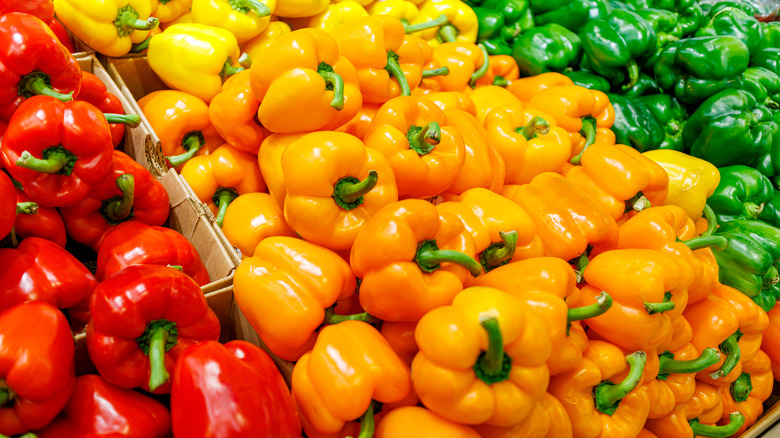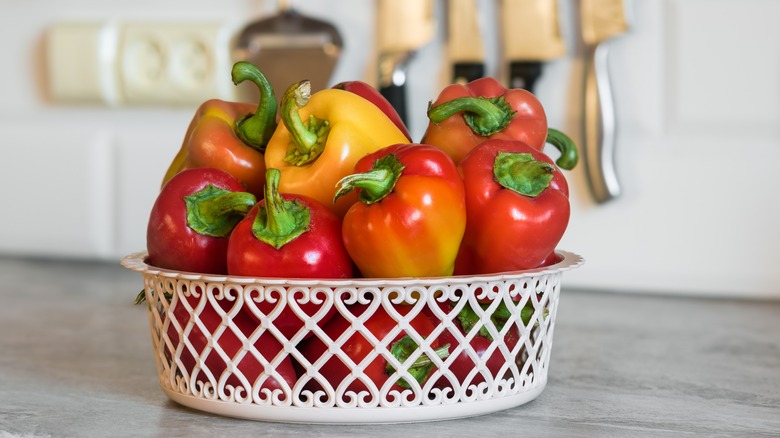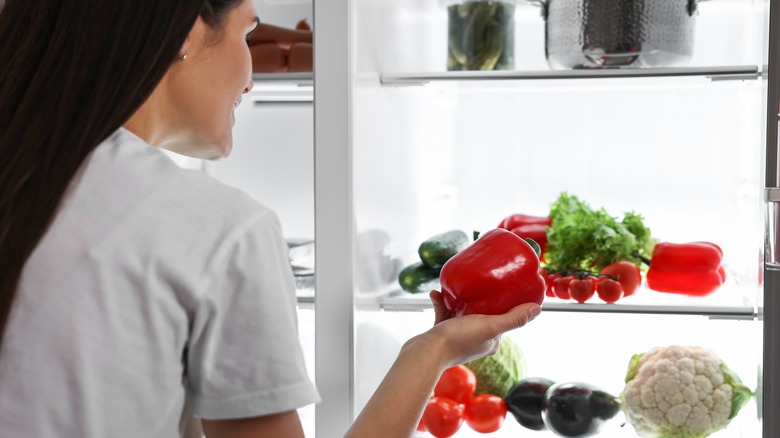Should You Store Bell Peppers At Room Temperature Or In The Fridge?
There are tons of feasible ways to reduce food waste, but one of the top contenders is to properly store the goods you buy. While it might seem like a no-brainer which foods belong in the fridge versus which are safe to chuck onto your counter, the answer isn't always clear-cut. Take bell peppers as a prime example. People are quick to assume that these colorful fruits (surprise — they're not veggies) belong in the refrigerator, but the truth is, they actually fare well both in the cold and at room temperature. So, how do you know which to go with? The answer is: it depends.
Whether you should keep this produce in your fridge or somewhere that's room temperature is contingent on how soon you plan to use your peppers as well as whether they're cut-up or not. From there, you can decide what works best for you so as to keep your bell peppers as fresh, crunchy, and flavorful as possible. Otherwise, you might just have to put that salad or those one-pan chicken fajitas on hold.
Leave bell peppers on the counter for quick usage
The good news is that you can absolutely store bell peppers right on your kitchen counter. It's the easiest, most effortless place they can be left, but this spot is only ideal if you're planning to use your bell peppers within the next few days. They also need to be in their whole form. That's because produce that has been cut or sliced in any way has exposed flesh, increasing the risk of harmful pathogens and bacteria growing.
If it's whole, and you're certain to use the fruit up relatively soon, an area on the counter and away from your stove top is a safe choice. Even a pantry or cabinet that isn't hit by direct heat or sunlight will do. Just keep them in a cool, dry area, and they should ideally be in a produce bag. This method will keep your bell peppers good for up to five days.
Make bell peppers last longer in the fridge
To extend your fruit's life to up to two weeks, the fridge is your best bet. This way, you can take a bit more of your time conjuring up ways to use the peppers (on the side with some rosemary and garlic roasted potatoes is a great way to go). Before putting them in the cold appliance, first ensure your bell peppers are clean and dry. Then put them in a mesh bag. A produce bag that's been left open will work just as well. From there, pop them in a low-humidity drawer so there's room for airflow and circulation.
Cut peppers should also be refrigerated, though they'll do best in an airtight container that's been lined with a paper towel to absorb moisture and slow down spoilage. These will last for slightly less time than whole peppers. You'll have a solid week to put them into a recipe before they start going bad. When they start getting soft, wrinkly, or discolored, it might be time to throw them out.


